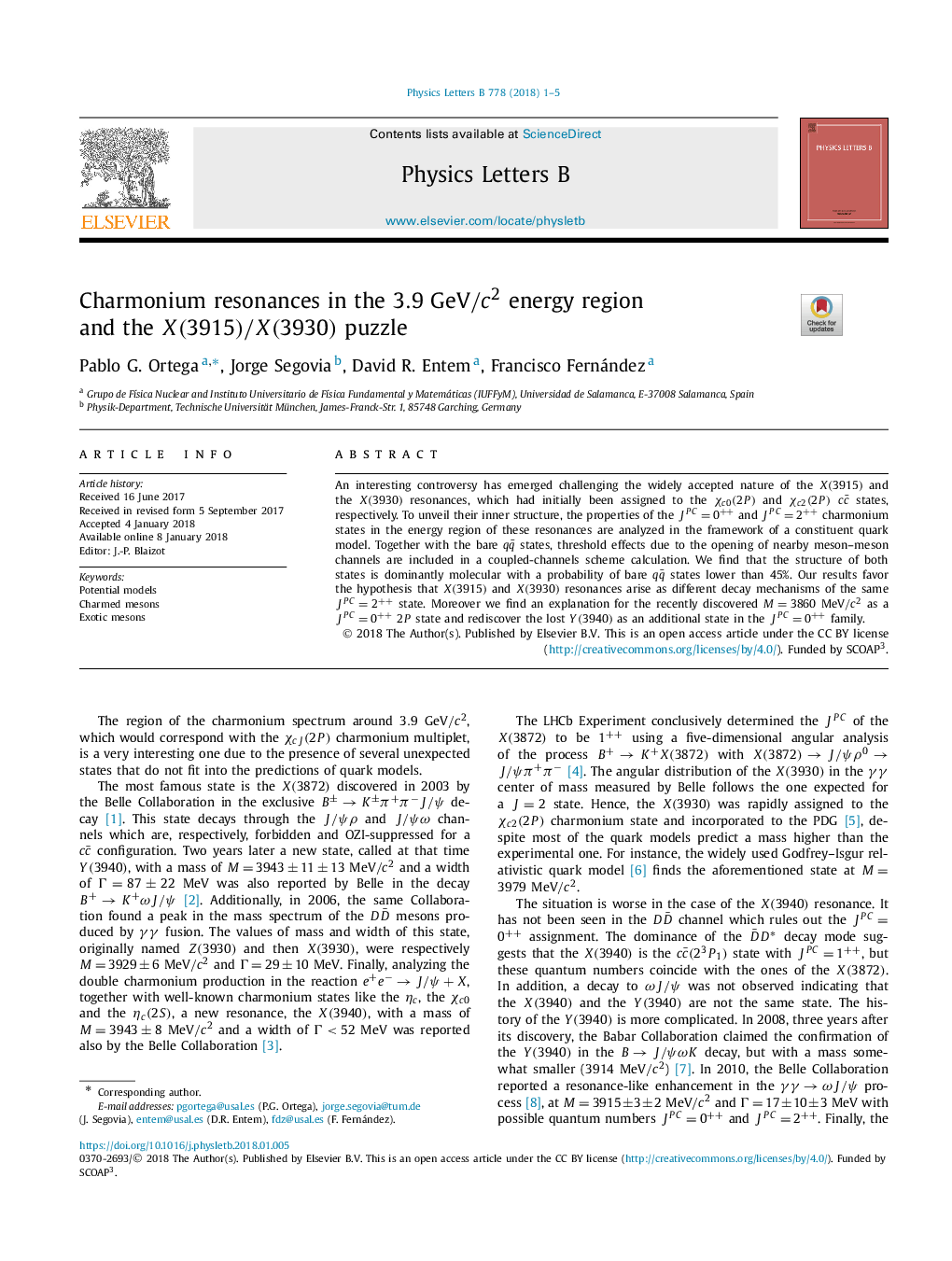| Article ID | Journal | Published Year | Pages | File Type |
|---|---|---|---|---|
| 8186952 | Physics Letters B | 2018 | 5 Pages |
Abstract
An interesting controversy has emerged challenging the widely accepted nature of the X(3915) and the X(3930) resonances, which had initially been assigned to the Ïc0(2P) and Ïc2(2P)cc¯ states, respectively. To unveil their inner structure, the properties of the JPC=0++ and JPC=2++ charmonium states in the energy region of these resonances are analyzed in the framework of a constituent quark model. Together with the bare qq¯ states, threshold effects due to the opening of nearby meson-meson channels are included in a coupled-channels scheme calculation. We find that the structure of both states is dominantly molecular with a probability of bare qq¯ states lower than 45%. Our results favor the hypothesis that X(3915) and X(3930) resonances arise as different decay mechanisms of the same JPC=2++ state. Moreover we find an explanation for the recently discovered M=3860MeV/c2 as a JPC=0++ 2P state and rediscover the lost Y(3940) as an additional state in the JPC=0++ family.
Related Topics
Physical Sciences and Engineering
Physics and Astronomy
Nuclear and High Energy Physics
Authors
Pablo G. Ortega, Jorge Segovia, David R. Entem, Francisco Fernández,
